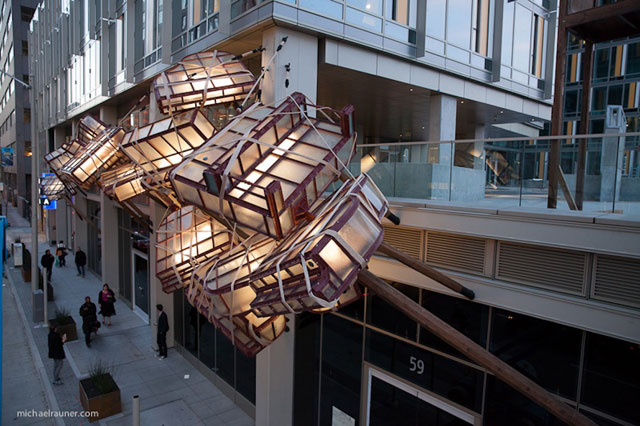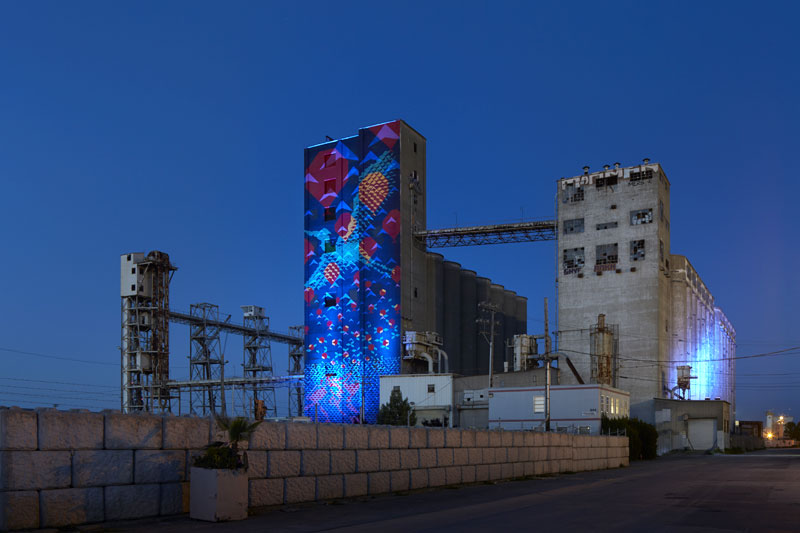Last year a conscious effort to leverage light as part of San Francisco’s city brand, primarily to attract hospitality revenue and tourism, was initiated with the debut of Leo Villareal’s The Bay Lights, a privately funded site-specific light installation on the western span of the Bay Bridge. Originally temporary, The Bay Lights is now being considered for permanent installation. In a recent stream of consciousness statement in the San Francisco Chronicle, former Mayor Willie Brown put forth a “modest proposal” for a “Season of Lights” with a contest for the most creatively illuminated building, citing City Hall and Embarcadero Center as great examples of what light can do. This year the San Francisco Travel Association self-branded the city as a “national leader in light art,” with a new website that invites “art and culture lovers” to “embrace the power of light” with a self-guided tour of sixteen disparate light installations around the city ranging from meh to spectacular. If this all sounds like a fervent grab for the attention of Burning Man aficionados in the off-season, well, it might be. Two new works this year, Brian Goggin’s and Dorka Keehn’s Caruso’s Dream downtown and Bayview Rise by Haddad and Drugan on Pier 92, reveal a lot about the possibilities of “light art” and the driving forces behind a movement to light up the city.

The full title of Goggin and Keehn’s latest public art installation is …and my room still rocks like a boat on the sea (Caruso’s Dream) — it is situated on the façade of a new residential high-rise at 55 Ninth Street and features thirteen sculptural “pianos” created from vintage chicken-wire glass and salvaged pilings from the old transbay terminal. It references an account of the 1906 earthquake, as told by opera legend Enrico Caruso, who was staying at the Palace Hotel and was unsure if he was awake or dreaming after being roused from his sleep during the calamity. From 4pm – 10am daily, viewers can tune into a short-range broadcast on 90.9 FM to hear a Caruso opera recording that inspired the work — the shifting light of the pianos, lit from within, are timed with the music and it is a bewitching, compelling experience.
I tuned in on my car radio from about a block away and listened as the music rose up out of crackly radio static upon approach (the station can only be heard within a block) and I circled back several times to see the work as Ninth Street has become a busy thoroughfare and there is no space to linger in transit. Certainly one could stand on the sidewalk with their handheld radio or boom box, but modern technology has seemed to eclipse these accoutrements, leaving the savvy viewer/listener to rely on the car radio. If you don’t mind circling back a few times, you can take in the work as I did, listening as Caruso fades in and out of range to compliment the work. The combination of sculpture and light and sound, as well as site-specific history and artifacts, is spectacular — as a multi-sensory experience it is, by far, one the most interesting public artworks the city has seen.
http://youtu.be/RJ6rTnqHCc0
Public access is an issue – not everyone who sees it on the street will understand the layers available for the experience, few will know to tune in and fewer will just happen to have a radio on hand. As much as I like the radio component, I wonder why the music couldn’t also be broadcast at an acceptable level on the street, to engage a broader, truly public audience and to enable viewers to linger more effectively with the work.


